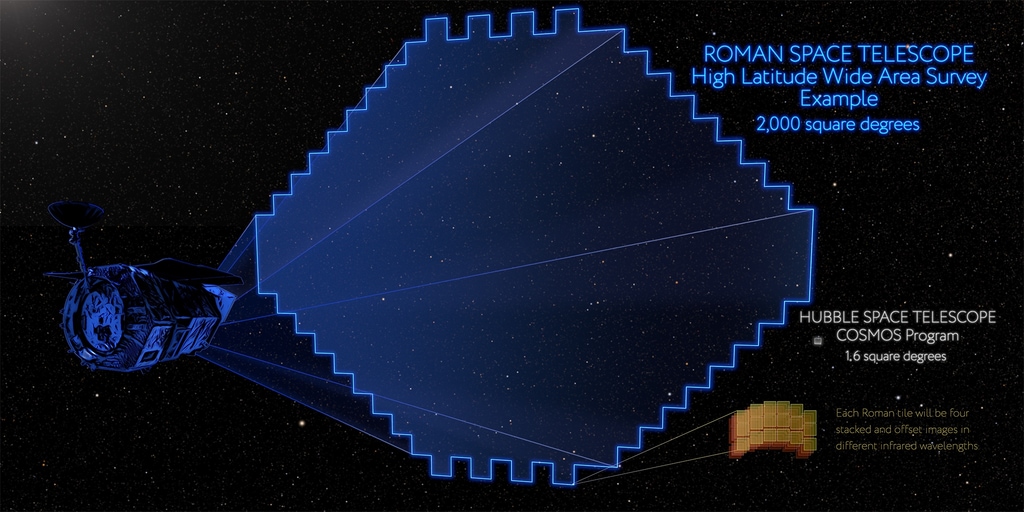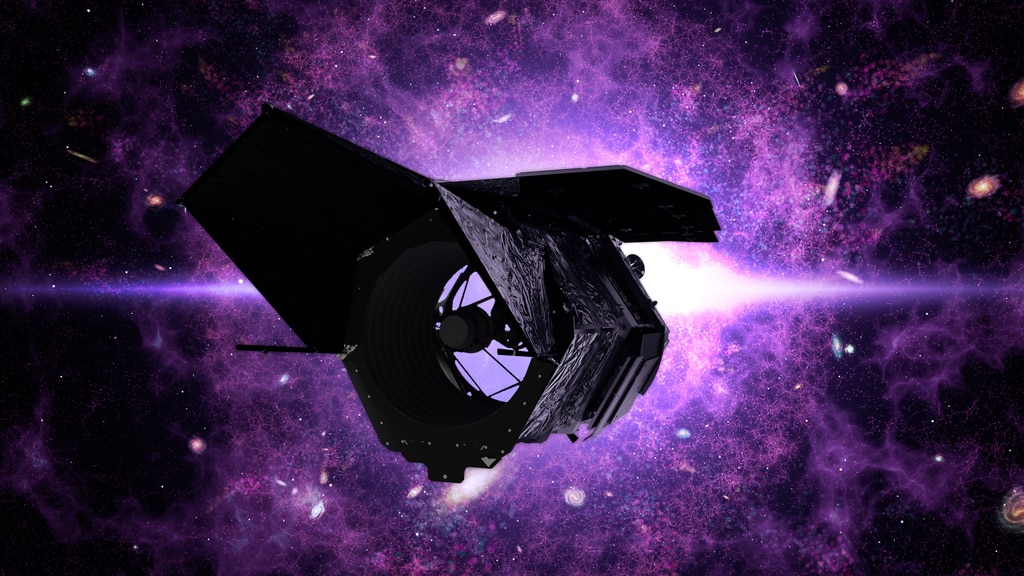Dominic Benford 2022 AAS Roman Hyperwall Talk

Static title card.
Credit: NASA's Goddard Space Flight Center

Title card spread across hyperwall screens.
Credit: NASA's Goddard Space Flight Center

Complete Nancy Grace Roman screen.
Credit: NASA's Goddard Space Flight Center
Animation of Roman Space Telescope.
To be used in combination with next two slides across hyperwall screens.
Credit: NASA's Goddard Space Flight Center

Image of Nancy Grace Roman and tweet about her.
Credit: NASA

Facts about Nancy Grace Roman.
Credit: NASA's Goddard Space Flight Center
Video clip simulating what a single Roman image could reveal with an ultra deep field image similar to Hubble's.
Credit: NASA's Goddard Space Flight Center/Nicole Drakos, Bruno Villasenor, Brant Robertson, Ryan Hausen, Mark Dickinson, Henry Ferguson, Steven Furlanetto, Jenny Greene, Piero Madau, Alice Shapley, Daniel Stark, Risa Wechsler
Zoom into a simulation of a single Roman observation of the Andromeda Galaxy.
Credit: NASA's Goddard Space Flight Center, STScI, and B. F. Williams (University of Washington)

This illustration compares the relative sizes of the areas of sky covered by two surveys: Roman’s High Latitude Wide Area Survey, outlined in blue, and the largest mosaic led by Hubble, the Cosmological Evolution Survey (COSMOS), shown in red. In current plans, the Roman survey will be more than 1,000 times broader than Hubble’s. Roman will also explore more distant realms of space than most other telescopes have probed in previous efforts to study why the expansion of the universe is speeding up.
Credit: NASA's Goddard Space Flight Center

First in a sequence of informational slides.
Credit: NASA

Second information slide. Wide Field Science.
Credit: NASA

Third information slide. Infrastructure.
Credit: NASA

Fourth information slide. Coronagraph Community Participation Program.
Credit: NASA

Fifth information slide. Additional Wide Field Science.
Credit: NASA

Sixth information slide. Additional infrastructure.
Credit: NASA

Seventh information slide. Additional Coronagraph CPP.

Timeline for the Roman mission.
Credit: NASA

Complete Roman capability screen.
Credit: NASA's Goddard Space Flight Center

Upper row of information about Roman's capabilities. To be used in combination with next slide for lower half.
Credit: NASA

Lower row of information about Roman's capabilities. Animation below fits in third spot.
Credit: NASA
Animation showing a tiling strategy for surveys performed by Roman. This animation works in the lower-right corner of the slide combination above.
Credit: NASA's Goddard Space Flight Center

Slide containing a series of images for use on "10th screen" of hyperwall.
Credit: NASA, STScI
Credits
Please give credit for this item to:
NASA's Goddard Space Flight Center. However, indvidual items should be credited as indicated above.
-
Scientist
- Dominic Benford (NASA/HQ)
-
Producers
- Scott Wiessinger (KBR Wyle Services, LLC)
- Marit Jentoft-Nilsen
Release date
This page was originally published on Tuesday, July 5, 2022.
This page was last updated on Wednesday, May 3, 2023 at 11:44 AM EDT.



